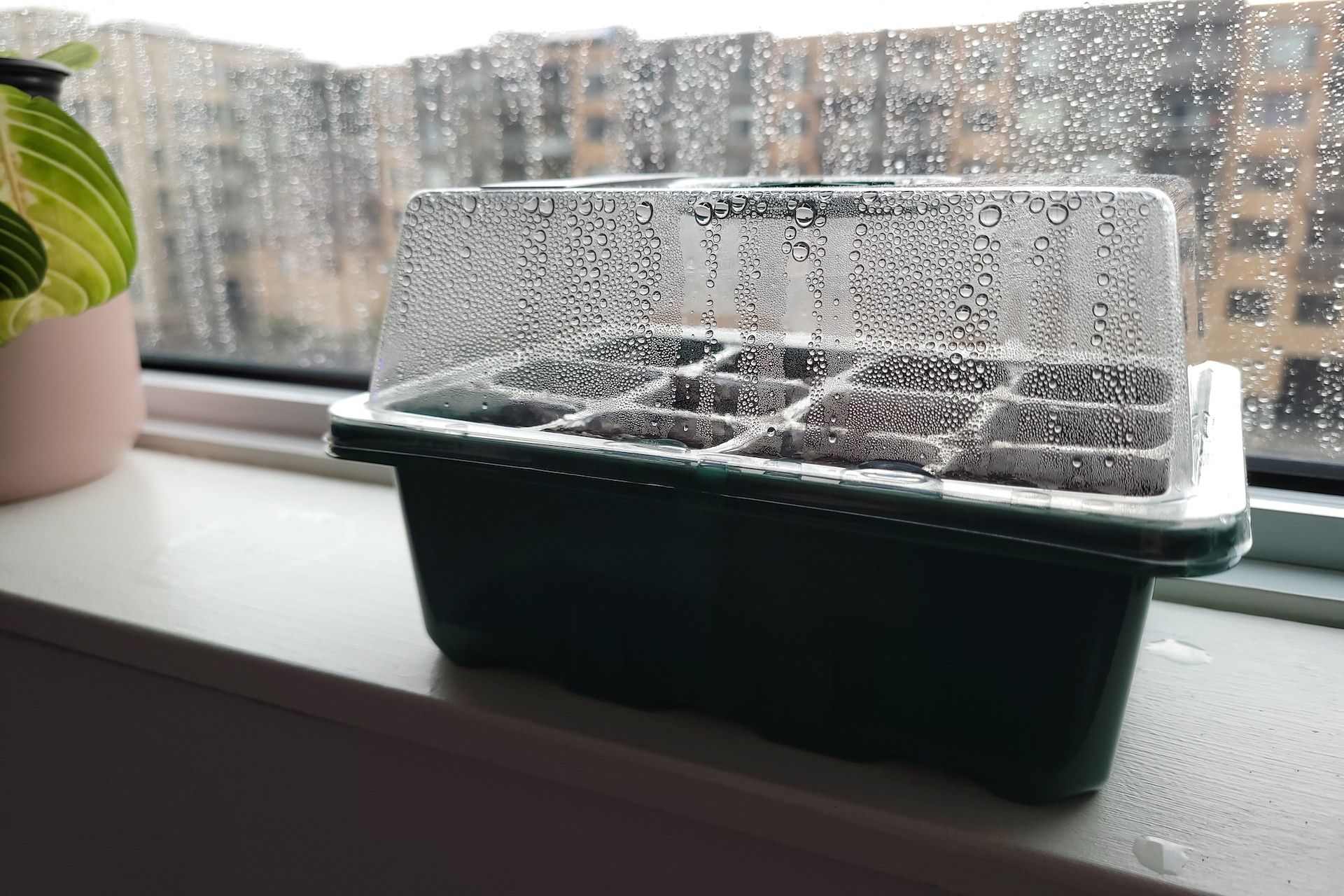
5 mins read
How to grow dragon fruit from seeds: Personal Experience
The miraculous process of growing dragon fruits from seeds is a delightful experience that I have had the pleasure of undertaking. Throughout my journey, I have discovered diverse ways of cultivating dragon fruits from seeds, each having its unique procedures and outcomes. One of the techniques I prefer involves soaking the seeds in water, then transferring them to soil, while the other method involves sowing the seeds directly into the soil. Both strategies have proven to be effective in different scenarios, and I'm eager to share my insights, experiences, and tips to help you kick-start your dragon fruit-growing journey.
Extracting Seeds from Dragon fruit
Before delving into the world of dragon fruit cultivation also known as pitahaya, it's essential to understand how to properly extract seeds from the fruit. The process is surprisingly simple, and it can be a fun and engaging task, even serving as an educational activity for children.
1. Choose a Ripe Pitahaya
The first step is choosing a ripe dragon fruit. The fruit should be vibrant in color, slightly soft to the touch, and without any significant blemishes or cuts. The more mature the fruit, the better the quality of the seeds.
2. Slice the Fruit Open
Next, you need to cut the fruit open. A simple way to do this is to slice it in half lengthwise, much like you would with an avocado. Be careful while handling the knife and try to ensure an even cut to easily access the flesh inside.
3. Scoop Out the Flesh
With a spoon, scoop out the dragon fruit's flesh. The seeds are embedded in the flesh, so you'll get them all out in this process. Make sure to be gentle to avoid crushing the tiny seeds.
4. Separate Seeds from Flesh
Separating the seeds from the flesh might be the most time-consuming step in this process. A simple method is to place the scooped flesh in a fine mesh sieve and run it under slow running water. While doing so, gently press and rub the flesh against the sieve. This process helps to separate the seeds from the flesh.
5. Dry the Seeds
Once you've separated the seeds from the flesh, spread them out on a paper towel and allow them to dry naturally in a cool, shaded area. Based on my experience, I strongly recommend allowing the seeds to dry for at least 24 hours. This extended drying period ensures that the seeds are thoroughly dried and free from any residual moisture. It's crucial to let the seeds dry thoroughly to prevent them from developing mold or fungus, which can jeopardize their viability.
6. Storage or Sowing
After the seeds have fully dried, you have the option to store them for future use or sow them immediately. If you choose to store them, place the seeds in a paper envelope and store them in a cool, dry place until you're ready to plant them.
Starting Dragon fruit Seeds in Water
 The first method is a technique where the seeds are pre-soaked in water prior to being planted in soil. The process starts by placing the pitahaya seeds in a glass of water and positioning the glass over a heat mat. The combination of warmth and hydration helps soften the outer shell of the seeds, creating an optimal environment for sprouting.
The first method is a technique where the seeds are pre-soaked in water prior to being planted in soil. The process starts by placing the pitahaya seeds in a glass of water and positioning the glass over a heat mat. The combination of warmth and hydration helps soften the outer shell of the seeds, creating an optimal environment for sprouting.
Transitioning to soil
When you observe that the shell has deteriorated and sprouts begin to appear, the seeds are ready for transplantation. Cactus soil is my go-to choice at this stage, given that it mimics the native soil conditions for dragon fruit plants, which belong to the cactus family.
Adding mycorrhizal fungi, or mykos, to the planting process can be highly beneficial. The mykos form a symbiotic relationship with the plant roots, aiding in their adjustment to the new environment by enhancing nutrient absorption and improving soil structure. This natural soil additive can be a significant factor in successfully transitioning your sprouts to their new homes.
Recommendation
If you want to increase your chance of success transitioning from water, I highly recommend this product.
Direct Soil Sowing
The second method, which is equally promising, involves sowing the seeds directly into the soil. This approach necessitates the use of a container that comes with a cover or lid to retain moisture, creating a high-humidity environment that favors the germination of pitahaya seeds.
A miniature greenhouse serves as an ideal location for implementing this method. The greenhouse's warm, humid environment is perfect for seed germination and early growth, providing a controlled setting that promotes healthy development.
Recommendation
There are several variations of this product available on Amazon. However, what I appreciate the most about this particular one is its price and the ability to see the roots through the container.
Soil Recommendation
In my opinion, this soil is not ideal for seedlings as their growth may be slower compared to a sandier soil. However, you can expect a stronger plant in the long run.
Nurturing Growth and Reducing Humidity
With either method, once the seedlings reach a height of about 2 to 3 cm (~101/128" to ~1"), it's time to gradually reduce the humidity in their environment. This is an essential step, as excessive moisture can lead to leggy growth condition where seedlings grow too tall and thin due to inadequate light. Reducing humidity levels at the right time encourages sturdier and more compact growth, equipping the seedlings with sufficient support for their upper parts.
Gradual reduction of humidity can be achieved by slowly opening the vent on the greenhouse or by partially removing the cover from your container. This gradual transition allows the seedlings to adapt to their new conditions without experiencing shock, ensuring a smoother growth journey.
Observe the image below as it showcases a clear example. The plants with a toothpick beside them were intentionally kept covered for a prolonged duration. Conversely, the smaller plants with a wider base were permitted to grow without a cover. You can see how thin they are when you leave the cover on for too long.

Common Pitfalls and Solutions
One common mistake in the cultivation of pitahaya from seeds is keeping the seedlings in a highly humid environment for too long. This leads to tall, thin seedlings that lack the necessary support for their superior parts. To avoid this, it's essential to monitor their growth and adjust the conditions accordingly.
Soil quality and type can also influence the growth and development of your dragon fruit plants. Using soil that drains well and is rich in nutrients, such as cactus soil, can significantly improve the chances of successful seed germination and plant growth.
Growing pitahaya from seeds is a rewarding and fascinating journey, filled with trials, triumphs, and learning experiences. While there is no definitive 'right' way to start dragon fruit seeds, my experiences have shown that the methods of pre-soaking the seeds and direct soil sowing can yield impressive results when executed correctly.
As a final tip, patience is key. Dragon fruit seeds may take a while to germinate, but the end product – a thriving, fruit-bearing plant – is well worth the wait. So, whether you are an experienced gardener looking to try something new, or a beginner venturing into the world of home gardening, I hope my experiences and insights can guide you in your journey of growing pitahaya from seeds.
Frequently Asked Questions
How long does it takes to see some growth? You may notice some growth within six days, but if not, don't worry. It can take up to two or three weeks for growth to occur.
What other names does dragon fruit go by? You may come across the terms pitaya and dragon fruit being used interchangeably, but in truth, the correct term is pitahaya. A comprehensive explanation on this topic has been provided by Edgar Valdivia, who is considered a trailblazer in the cultivation of dragon fruit in North America: Youtube Video
What is the name of plant that produce Pitahaya? Hylocereus. There are various species of the Hylocereus genus that produce the fruit, such as Hylocereus undatus (white-fleshed pitahaya) and Hylocereus costaricensis (red-fleshed pitahaya).
How long does it take to grow dragon fruit from seed? You should expect some fruits from 4 to 5 years and even more in some cases. If you want to get fruit earlier, you should check into grafting. It's a common practice used with fruit trees to get fruits sooner, and the same applies to dragon fruit plants. With good conditions and proper care, you can get fruit in a year.
What is the best way to germinate dragon fruit seeds? Currently, I have found it more convenient to begin with soil directly. While the plant may grow quicker in water, transitioning to soil will require the roots to adapt to the soil.




